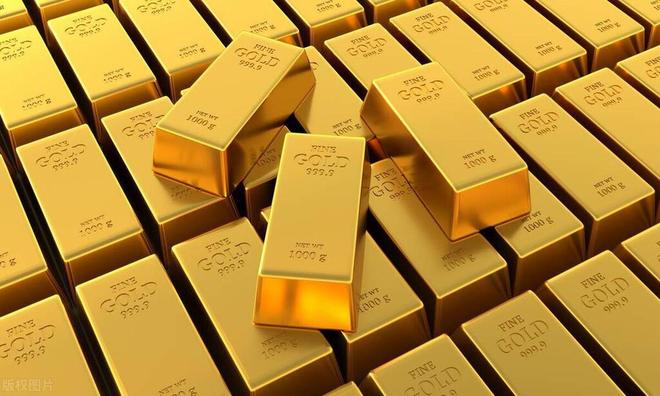
Recently, the international gold market has reached a historic moment. After breaking through the $3791/ounce mark, spot gold prices continued to trade around $3780 during trading, with a cumulative increase of over 28% for the year. This price not only breaks the record for metal pricing in human monetary history, but also marks the collective pursuit of safe haven assets by global capital in an era of increasing uncertainty.
The launch of the current round of interest rate cuts by the Federal Reserve has become a key driving force. In the third quarter of 2025, the US economic data presented a combination of "low inflation+weak growth": the year-on-year increase in the core PCE price index fell to 2.3%, the unemployment rate remained low at 4.1%, but the manufacturing PMI remained below the boom bust line for three consecutive months. This economic characteristic forced the Federal Reserve to cut interest rates by 50 basis points at its September meeting, lowering the target range for the federal funds rate to 3.75% -4.00%. The collapse of real interest rates directly increases the value of gold holdings - the 10-year US Treasury yield has dropped to 3.2%, and the market's implied inflation expectations for the next five years remain stable at around 2.5%, with real interest rates compressed to a historic low of 0.7%. The Federal Reserve's dot matrix suggests that it will cut interest rates by another 150 basis points before 2026, and real interest rates may slide into the negative range. Historical data shows that when the real interest rate in the United States is below 1%, the annualized yield of gold reaches 8.3%, far exceeding the performance of US stocks during the same period. The process of "de dollarization" of the global monetary system has strengthened the attributes of gold currency. The proportion of gold reserves held by the Russian central bank has increased to 28%, and China has increased its holdings of gold for 18 consecutive months. The annual gold purchase volume of global central banks has exceeded 1200 tons, which is essentially an increase in vigilance towards the US dollar credit system.
Geopolitical conflicts drive up global risk premiums. The geopolitical landscape in 2025 is characterized by "multipolar conflict": the Russia-Ukraine conflict has entered the stage of "war of consumption", and the use of hypersonic missiles and other new weapons by both sides has led to a 37% increase in the volatility of global energy prices; The situation in the Middle East is tense due to the Iran nuclear issue, and the insurance premium for oil tankers in the Strait of Hormuz has soared to three times pre war rates; The military deployment in the Asia Pacific region has been upgraded, and countries such as Japan and the Philippines have exceeded 2% of their GDP in terms of military spending. These "low probability, high destruction" conflicts force investors to consider gold as an essential allocation to combat "tail risk". The holdings of SPDR Gold Shares, the world's largest gold ETF, have exceeded 1300 tons, reaching a new high since the 2020 pandemic. Hedge funds' net long positions in COMEX gold futures have increased to 280000 lots, doubling from the beginning of the year, confirming professional investors' expectations for long-term geopolitical risk.
Market liquidity restructuring drives dual growth in gold demand. According to data from the World Gold Council, the total global demand for gold in the second quarter of 2025 reached 1258 tons, a year-on-year increase of 18%. Among them, investment demand for gold bars and coins increased by 34%, and ETF holdings increased by 21%. This' dual wheel drive 'reflects the profound adjustment of global capital in asset allocation. Gold shows a significant negative correlation with major risk assets: from 2025 to present, the S&P 500 index has risen by 12%, while gold has risen by 28%; The volatility of Bitcoin prices is 85%, while the volatility of gold remains at a low level of 15%. This "stability premium" has led long-term capital such as pension funds and sovereign wealth funds to increase their gold allocation ratio from 5% to 8% -10%. Technical indicators have issued a strong bullish signal: the gold/silver ratio has dropped from 85:1 at the beginning of the year to 81:1, and the gold/copper ratio has exceeded 0.3, reflecting that the market has priced the economic recession beyond industrial demand expectations. The price of gold has broken through the historical high of $1920 in 2011. Calculated based on inflation adjusted real prices, the current gold price has not yet reached its peak level of $850 in 1980 (equivalent to $3200 today), and there is still room for upward movement.
Against the backdrop of a new normal of "low growth+high volatility" globally, gold is no longer just a cyclical safe haven tool, but is evolving into a cross cyclical strategic asset. Dalio, founder of Bridgewater Fund, pointed out that "in the era of debt monetization and geopolitical fragmentation, gold is the only wealth insurance that can cross political cycles and monetary systems." This historic market trend may just be the beginning of gold redefining the value of money.

On November 28th local time, Microsoft publicly acknowledged a new known issue in Windows 11: After installing the optional update (KB5064081) and subsequent patches in August 2025 on Windows 11 devices, when selecting the login option on the lock screen interface, the "password" login icon mysteriously disappears.
On November 28th local time, Microsoft publicly acknowledge…
The European Commission's Autumn 2025 Economic Forecast out…
Recently, according to Xinhua News Agency, a ministry build…
Recently, the European Commission is about to unveil a seri…
On the just concluded trading day, the three major stock in…
By the end of 2025, the US financial sector is being swept …